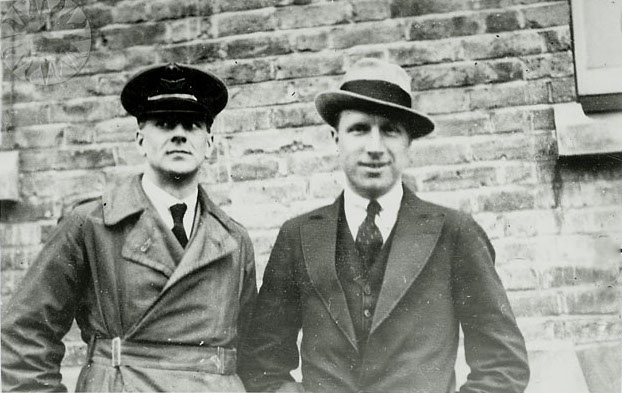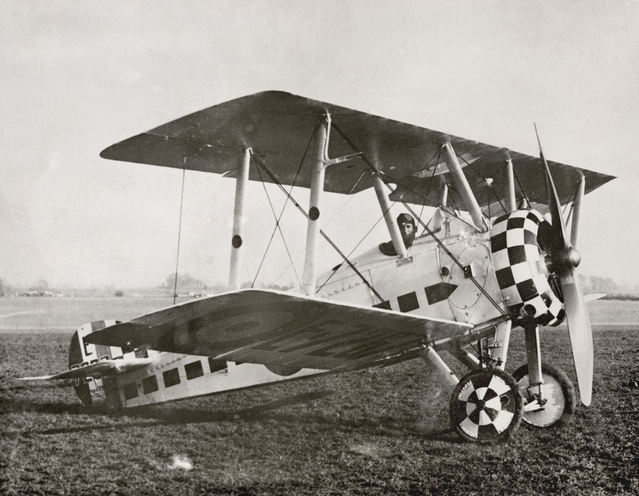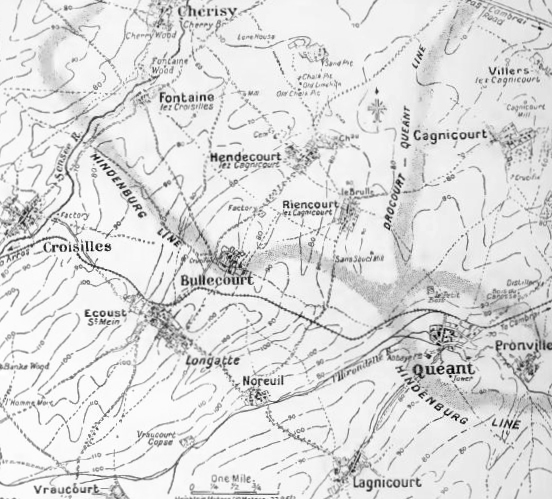|
Arthur Brown (captain)
Arthur Roy Brown, (23 December 1893 – 9 March 1944) was a Canadian flying ace of the First World War, credited with ten aerial victories. The Royal Air Force officially credited Brown with shooting down Manfred von Richthofen, the "Red Baron", although historians, doctors, and ballistics experts consider it all but certain that Richthofen was actually killed by a machine gunner firing from the ground.Franks & Bennett (1997) Early years Brown was born to upper-middle-class parents in Carleton Place, west of Ottawa. His family home still exists, located at 38 Mill Street, just down from the Town Hall. Another source, the Carleton Place and Beckwith Heritage Museum, refers to the family home as being on Judson Street, and says that this was his birthplace. That house also still exists. He was the middle of five children. He had two older sisters, Margaret and Bessie, and two younger brothers, Horace and Howard. His father had started business as a miller, but branched out ... [...More Info...] [...Related Items...] OR: [Wikipedia] [Google] [Baidu] |
Arthur Whitten Brown
Lieutenant-Colonel Sir Arthur Whitten Brown, (23 July 1886 – 4 October 1948) was a British military officer and aviator who flew as navigator of the first successful non-stop transatlantic flight with pilot John Alcock in June 1919. Biography Arthur Whitten Brown was born in Glasgow to American parents; his father had been sent to Scotland to evaluate the feasibility of siting a Westinghouse factory on Clydeside. His father, Arthur George, was an electrical engineer, After his birth, the family moved to Chorlton, and lived at 'Ellerslie', 6 Oswald Rd. The factory was eventually sited in Trafford Park in Stretford, Manchester, and the family subsequently relocated there. Both of the Atlantic pilots attended the Central High School for Boys, mostly known as Manchester Central High School. Alcock left at 16. Brown began his career in engineering before the outbreak of World War I and undertook an apprenticeship with British Westinghouse in Manchester. In 1914, he enliste ... [...More Info...] [...Related Items...] OR: [Wikipedia] [Google] [Baidu] |
Wop May
Wilfrid Reid "Wop" May, (March 20, 1896 – June 21, 1952) was a Canadian flying ace in the First World War and a leading post-war aviator. He was the final Allied pilot to be pursued by Manfred von Richthofen before the German ace was shot down on the Western Front (World War I), Western Front in 1918. After the war, May returned to Canada, pioneering the role of a bush pilot while working for Canadian Airways in Alberta, Northern Alberta and the Northwest Territories. Early life May was born in Carberry, Manitoba, the son of a carriage maker. His family moved to Edmonton, Alberta, Edmonton in 1902. On the way, they stayed with family and friends; his two-year-old cousin, Mary Lumsden, could not pronounce Wilfrid and called him "Woppie". This gave him his nickname "Wop". He attended the Edmonton High School (now Victoria School of Performing and Visual Arts) while in Edmonton. First World War May joined the Canadian Expeditionary Force (CEF) in February 1916 during the First Wo ... [...More Info...] [...Related Items...] OR: [Wikipedia] [Google] [Baidu] |
Sopwith Camel
The Sopwith Camel is a British First World War single-seat biplane fighter aircraft that was introduced on the Western Front in 1917. It was developed by the Sopwith Aviation Company as a successor to the Sopwith Pup and became one of the best-known fighter aircraft of the Great War. Pilots flying Camels were credited with downing 1,294 enemy aircraft, more than any other Allied fighter of the conflict. Towards the end of the war, Camels lost their edge as fighters and were also used as a ground-attack aircraft. The Camel was powered by a single rotary engine and was armed with twin synchronized Vickers machine guns. It was difficult to fly, with 90% of its weight in the front two metres (seven feet) of the aircraft, but it was highly manoeuvrable in the hands of an experienced pilot, a vital attribute in the relatively low-speed, low-altitude dogfights of the era. Its pilots joked that their fates would involve "a wooden cross, the Red Cross, or a Victoria Cross". T ... [...More Info...] [...Related Items...] OR: [Wikipedia] [Google] [Baidu] |
Albatros D
An albatross is one of a family of large winged seabirds. Albatross or Albatros may also refer to: Animals * Albatross (butterfly) or ''Appias'', a genus of butterfly * Albatross (horse) (1968–1998), a Standardbred horse Literature * Albatross Books, a German publishing house that produced the first modern mass market paperback books * Albatros Literaturpreis, a literary award * "L'albatros" (poem) ("The Albatross"), 1859 poem by Charles Baudelaire * ''The Albatross'' (novella), a 1971 novella by Susan Hill * ''The Albatross'', the fictional propeller-sustained airship in Jules Verne's novel '' Robur the Conqueror'' * ''Albatross'' (novel), a 2019 novel by Terry Fallis * ''Albatross'' (magazine), 1970s lesbian satirical magazine Film and television * Films Albatros, a French film production company which operated between 1922 and 1939 * ''Albatross'' (2011 film), a British film * ''Albatross'' (2015 film), an Icelandic film * ''Albatross'' (2022 film), an Ameri ... [...More Info...] [...Related Items...] OR: [Wikipedia] [Google] [Baidu] |
Bloody April
Bloody April was the (largely successful) British air support operation during the Battle of Arras (1917), Battle of Arras in April 1917, during which particularly heavy casualties were suffered by the Royal Flying Corps at the hands of the German ''Luftstreitkräfte''. The tactical, technological, and training differences between the two sides ensured the British suffered a casualty rate nearly four times as great as their opponents. The losses were so disastrous that it threatened to undermine the morale of entire Squadron (aviation), squadrons. The RFC contributed to the success, limited as it finally proved, of the British Army during the five-week series of battles. Background In April 1917 the British Army began an offensive at Arras, planned in conjunction with the French High Command, who were simultaneously embarking on a massive attack (the ''Nivelle Offensive'') about to the south. The Royal Flying Corps (RFC) supported British operations by offering close air suppor ... [...More Info...] [...Related Items...] OR: [Wikipedia] [Google] [Baidu] |
Battle Of Arras (1917)
The Battle of Arras, also known as the Second Battle of Arras, was a British offensive on the Western Front (World War I), Western Front during the First World War. From 9 April to 16 May 1917, British troops attacked German defences near the French city of Arras on the Western Front. The British achieved the longest advance since trench warfare had begun, surpassing the record set by the French Sixth Army (France), Sixth Army on 1 July 1916. The British advance slowed in the next few days and the German defence recovered. The battle became a costly stalemate for both sides and by the end of the battle, the British Third Army (United Kingdom), Third Army and the First Army (United Kingdom), First Army had suffered about 160,000 casualties and the German 6th Army (German Empire), 6th Army about 125,000. For much of the war, the opposing armies on the Western Front were at a stalemate, with a continuous line of Trench warfare, trenches from the Belgian coast to the France-Switzerla ... [...More Info...] [...Related Items...] OR: [Wikipedia] [Google] [Baidu] |
Royal Flying Corps
The Royal Flying Corps (RFC) was the air arm of the British Army before and during the First World War until it merged with the Royal Naval Air Service on 1 April 1918 to form the Royal Air Force. During the early part of the war, the RFC supported the British Army by artillery co-operation and photographic reconnaissance. This work gradually led RFC pilots into aerial battles with German pilots and later in the war included the strafing of enemy infantry and emplacements, the bombing of German military airfields and later the strategic bombing of German industrial and transport facilities. At the start of World War I the RFC, commanded by Brigadier-General Sir David Henderson, consisted of five squadrons – one observation balloon squadron (RFC No 1 Squadron) and four aeroplane squadrons. These were first used for aerial spotting on 13 September 1914 but only became efficient when they perfected the use of wireless communication at Aubers Ridge on 9 May 1915. Ae ... [...More Info...] [...Related Items...] OR: [Wikipedia] [Google] [Baidu] |
Sopwith Pup
The Sopwith Pup is a British single-seater biplane fighter aircraft built by the Sopwith Aviation Company. It entered service with the Royal Naval Air Service and the Royal Flying Corps in the autumn of 1916. With pleasant flying characteristics and good manoeuvrability, the aircraft proved very successful. Newer German fighters eventually outclassed the Pup, though it remained on the Western Front until late 1917. The remaining Pups were relegated to Home Defence and training units. The Pup's docile flying characteristics also made it ideal for use in aircraft carrier deck landing and takeoff experiments and training. Design and development In 1915, Sopwith produced a small aircraft, known as "Hawker's Runabout" (or the SL.T.B.P), for the company's test pilot Harry Hawker. It was a single-seat, Tractor configuration, tractor biplane powered by a seven-cylinder Gnome Monosoupape, Gnome rotary engine. Another four similar aircraft have been tentatively identified as Sopwith ... [...More Info...] [...Related Items...] OR: [Wikipedia] [Google] [Baidu] |
Cranwell
Cranwell is a village in the civil parish of Cranwell, Brauncewell and Byard's Leap, in the North Kesteven district of Lincolnshire, England. It is situated approximately north-west from Sleaford and south-east from Lincoln. The principal through road, the B1429 between the A15 to the east and the A17 to the west, joins the village to RAF Cranwell. The appropriate civil parish is called Cranwell, Brauncewell and Byard's Leap with a population of 2,827 at the 2011 census. Climate The British Isles experience a temperate, maritime climate with warm summers and cool winters. Lincolnshire's position on the east of the British Isles allows for a sunnier and warmer climate relative to the national average, and it is one of the driest counties in the UK. In Cranwell, the average daily high temperature peaks at in July and a peak average daily mean of occurs in July. The lowest daily mean temperature is in January; the average daily high for that month is and the daily low is ... [...More Info...] [...Related Items...] OR: [Wikipedia] [Google] [Baidu] |
Eastchurch
Eastchurch is a village and civil parish on the Isle of Sheppey, in the English county of Kent, two miles east of Minster, Swale, Minster. The village website claims the area has "a history steeped in stories of piracy and smugglers". Aviation history Eastchurch is styled the "home of British aviation" as Eastchurch airfield saw the first controlled flight by a British pilot on British soil. The Eastchurch airfield played a significant role in the history of British aviation from 1909 when Frank McClean acquired Stonepits Farm, on the marshes across from Leysdown, converting the land into an airfield for members of the Aero Club of Great Britain. The Short Brothers, Horace, Eustace and Oswald, built aircraft at Battersea to be tested at the site; later John Moore-Brabazon, 1st Baron Brabazon of Tara, Moore-Brabazon, A. K. Huntington, Charles S. Rolls and Cecil Grace all visited and used the flying club's services. Wright brothers, Wilbur Wright and his brother Orville came to ... [...More Info...] [...Related Items...] OR: [Wikipedia] [Google] [Baidu] |
Vertebra
Each vertebra (: vertebrae) is an irregular bone with a complex structure composed of bone and some hyaline cartilage, that make up the vertebral column or spine, of vertebrates. The proportions of the vertebrae differ according to their spinal segment and the particular species. The basic configuration of a vertebra varies; the vertebral body (also ''centrum'') is of bone and bears the load of the vertebral column. The upper and lower surfaces of the vertebra body give attachment to the intervertebral discs. The posterior part of a vertebra forms a vertebral arch, in eleven parts, consisting of two pedicles (pedicle of vertebral arch), two laminae, and seven processes. The laminae give attachment to the ligamenta flava (ligaments of the spine). There are vertebral notches formed from the shape of the pedicles, which form the intervertebral foramina when the vertebrae articulate. These foramina are the entry and exit conduits for the spinal nerves. The body of the vertebr ... [...More Info...] [...Related Items...] OR: [Wikipedia] [Google] [Baidu] |
Avro 504
The Avro 504 is a single-engine biplane bomber made by the Avro, Avro aircraft company and under licence by others. Production during World War I totalled 8,970 and continued for almost 20 years, making it the most-produced aircraft of any kind that served in any military capacity during the First World War. More than 10,000 were built from 1913 until production ended in 1932. Design and development First flown from Brooklands by F. P. Raynham, Fred "Freddie" Raynham on 18 September 1913,Jackson 1990, p.52. powered by an Gnome Lambda seven-cylinder rotary engine, the Avro 504 was a development of the earlier Avro 500, designed for training and private flying. It was a interplane struts#Bays, two-bay all-wooden biplane with a square-section fuselage. Manufacturers The following companies are recorded as manufacturing the Avro 504 under licence. * Avro, A. V. Roe and Co Ltd., Park Works, Newton Heath, Manchester; and at Hamble Aerodrome, near Southampton, Hants * Australian A ... [...More Info...] [...Related Items...] OR: [Wikipedia] [Google] [Baidu] |







